#1 Gold Dental Crown Buyer Las Vegas & Henderson
History
The dental crown, which is also known as a cap, is a prosthetic device designed to strengthen, restore function, and improve the appearance of damaged, weakened, or decaying teeth. It is believed that it was already used in 200 AD by people in Tuscany in Italy. Today it is so advanced that it is probably not even possible to tell if someone has put a crown on it.
Skeletons dating back more than four millennia have been found on the island of Luzon, with gold caps and crowns on their teeth. At that time, the crown consisted of a combination of gold, silver, copper, bronze, and other precious metals such as gold and silver.
Among the dental innovations in Europe, prostheses and crowns can be traced back to ancient Italy’s Etruscans. The first wooden false teeth were found in Japan in the 16th century, and human and animal teeth could be encased in ivory to help make false teeth.
It was dated back 4000 years ago when the first known use of dental crowns happened in the Philippines and even 2500 years in China.
Over the years, scientists have learned that modifying teeth with gold was popular among chiefs and political rulers. Skeletons were in Southeast Asian countries with a long history of gold teeth and crowns in antiquity.
In the 17th century, Europeans replaced missing teeth with human teeth and began carving dentures out of bone and ivory. By the end of the 19th and start of the 20th century, Europeans started to carve prostheses from bone or ivory with the help of gold and silver.
Types of Gold Dental Crowns
Dentistry often uses gold in its crowns with carat values between 10 and 22%. On average, there are two types of golden-yellow crowns on the market. In addition to gold, this type of alloy can also contain certain palladium, platinum, and silver.
Gold has been widely used in dentistry for more than 4,000 years to repair teeth, and dentists sometimes use silver-colored alloys to perform the restoration.
Due to their metallic color, gold alloys are the least natural-looking crown materials. Today dentists usually combine gold with other metals such as silver, copper, or even bronze for crowns.
Theoretically, the most durable types of dental crowns are those made of gold-based metal alloys. Besides, these are very wear-resistant and also protect the opposing teeth. Some people have their front teeth molars, or the back upper tooth crowned with gold alloy.
Dental crowns, bridges, and gold fillings are valuable and can earn you thousands of dollars if you stow them in your dental office. Did you know that some of your old dental work contains so much gold that it could sell for $1,000 to $2,500?
Who Buys Gold Dental Crowns in Las Vegas?
If you have an old golden tooth crown or filling, you may be wondering what to do with it. If you are looking for a gold crown buyer who will give you a fair valuation and pay you cash quickly, don’t expect to be bedridden with a useless dental crown. The value of your old dental crown depends on the amount of gold it contains and the quality of the gold fillings.
Unlike jewelry, dental gold is not wearable and often ends up somewhere to forget. Dentists also find gold crowns and fillings more valuable than other types of gold teeth.
Deciding to sell your dental gold is a smart move that can quickly earn you some money. Many crowns were made of gold alloys, not pure gold, which means they may contain less than 25% gold. You can sell the crown to a company that buys scrap for dental valves with high gold content.
Regardless of the share of gold, you have the right to sell the crown to an interested buyer. We’ve got a few things you should do before you sell your gold to make sure the process runs smoothly.
Many dental gold buyers do not pay for the precious metals found in dental scrap, but Nevada Coin Mart pays for gold, silver, platinum, and palladium. While most of the tooth waste value comes from the gold content, some precious metal is added to increase strength and durability.
Do not forget that the dentist or the dental laboratory that made the crown do not know what it can be worth, not even in scrap. If you are trying to find where to sell in Las Vegas, Henderson, and the greater area of Nevada, look no further than Nevada Coin Mart. Why have buyers of these items not found and sold gold and other precious metals when the price of finding gold and other precious metals has risen so dramatically in recent decades? Look for places where you can sell broken or damaged jewelry, and if there are yours, finding a place where they sell for less than $1,000 apiece is a must-try.
The value of the scrap crown is based on the type of alloy used for its manufacture. Alloys consist of a small percentage of dental crowns, and their values are based on whether or not there is enough gold in the alloys used for their manufacture.
For increased profits, dental crowns are sold at a higher price, even if less gold is available. While dental crowns made of high-grade alloys are the most durable option, porcelain fused with a metal crown is an excellent alternative.
The design, color, and appearance of the crown are more natural and fit better with the teeth, and they fit better into your teeth. According to dentists, two gold molars made of mixed metals have the same amount of gold as a single gold tooth, but a different color depending on the dentist.
It is said that metal refiners buy such things, break them down into their metals, and mix them with other metals.
As a precious metal refiner, we can extract gold from the dental objects I have described. Pure gold consists of 24 carats, but the precious metal alloys used to make yellow gold crowns can range from 10 to 20 carats. Since dental gold can vary in purity, you need a buyer who can determine the exact purity of the item and make sure it is not labeled as gold jewelry at 14k or 18k.
A silver or white-gold crown can have significant precious metal content, but sometimes precious metal alloys are made, and the metals in the crown are fused.
Dentistry often uses gold in its crowns with carat values between 10 and 22%. On average, there are about 1,000 yellow-gold crowns on the market today. Tooth alloys that are colored yellow, silver, or white may have a very low value in the scrap metal.
Unlike gold, these alloys may also contain certain palladium, platinum, and silver, but not as much as gold.









































